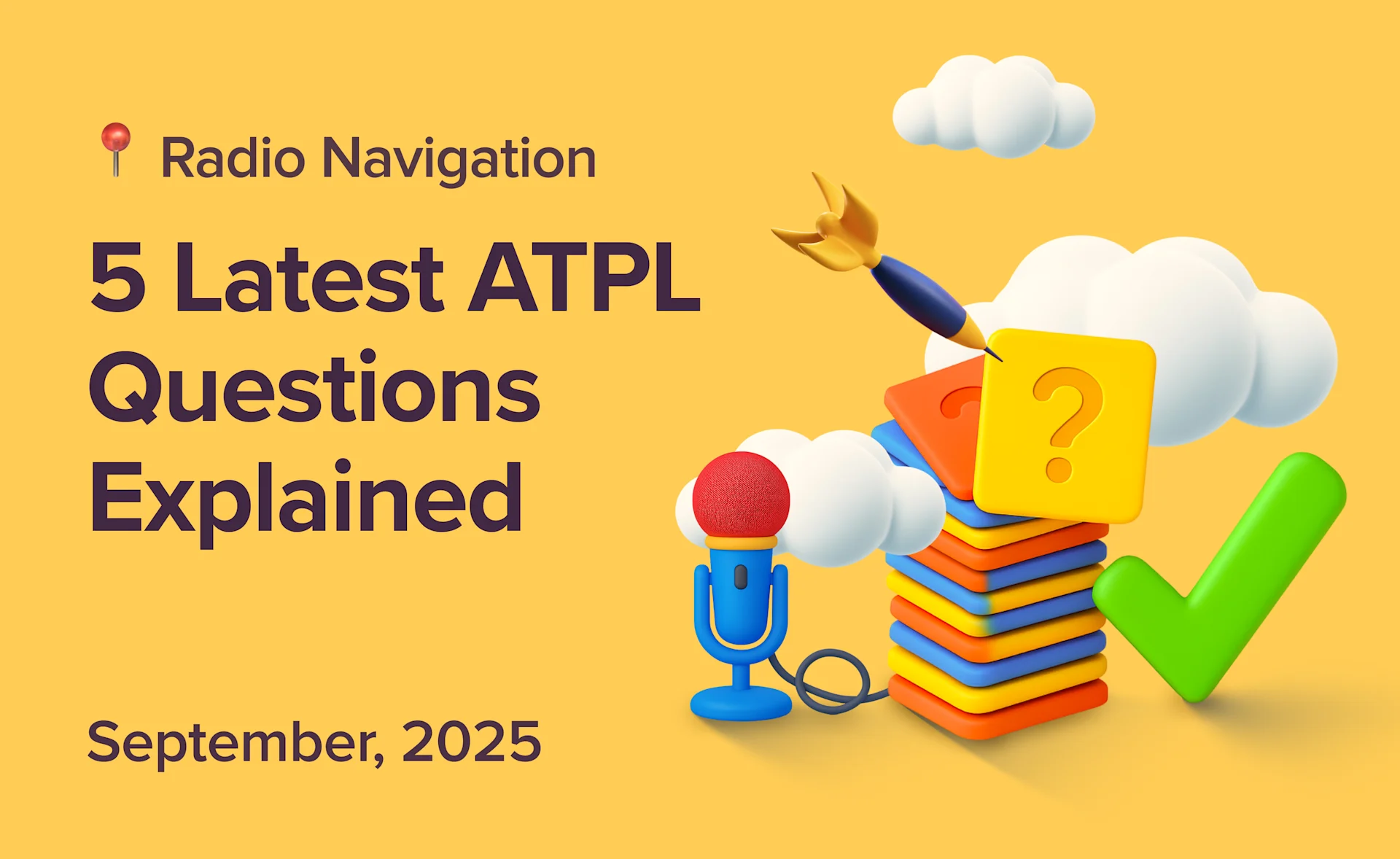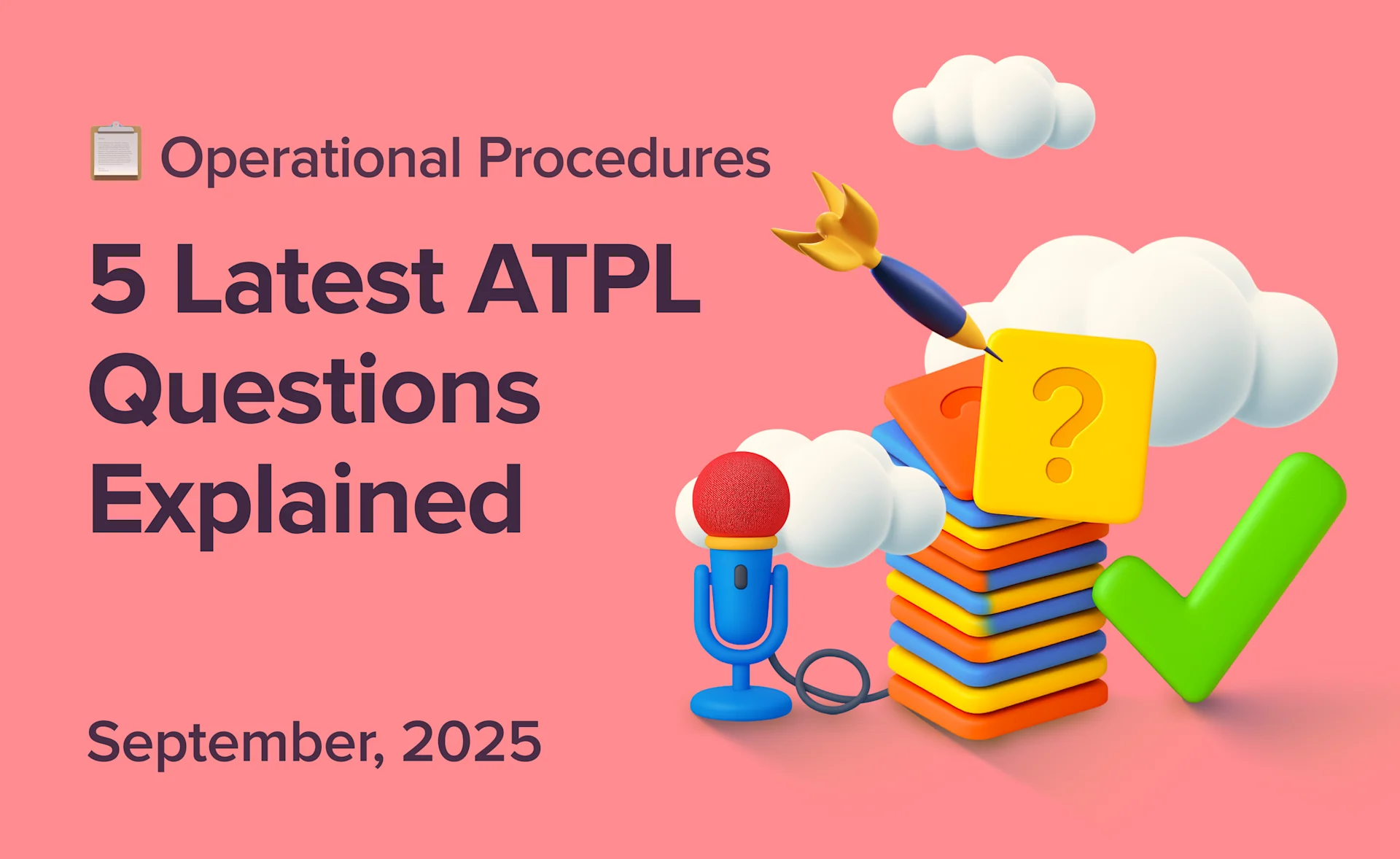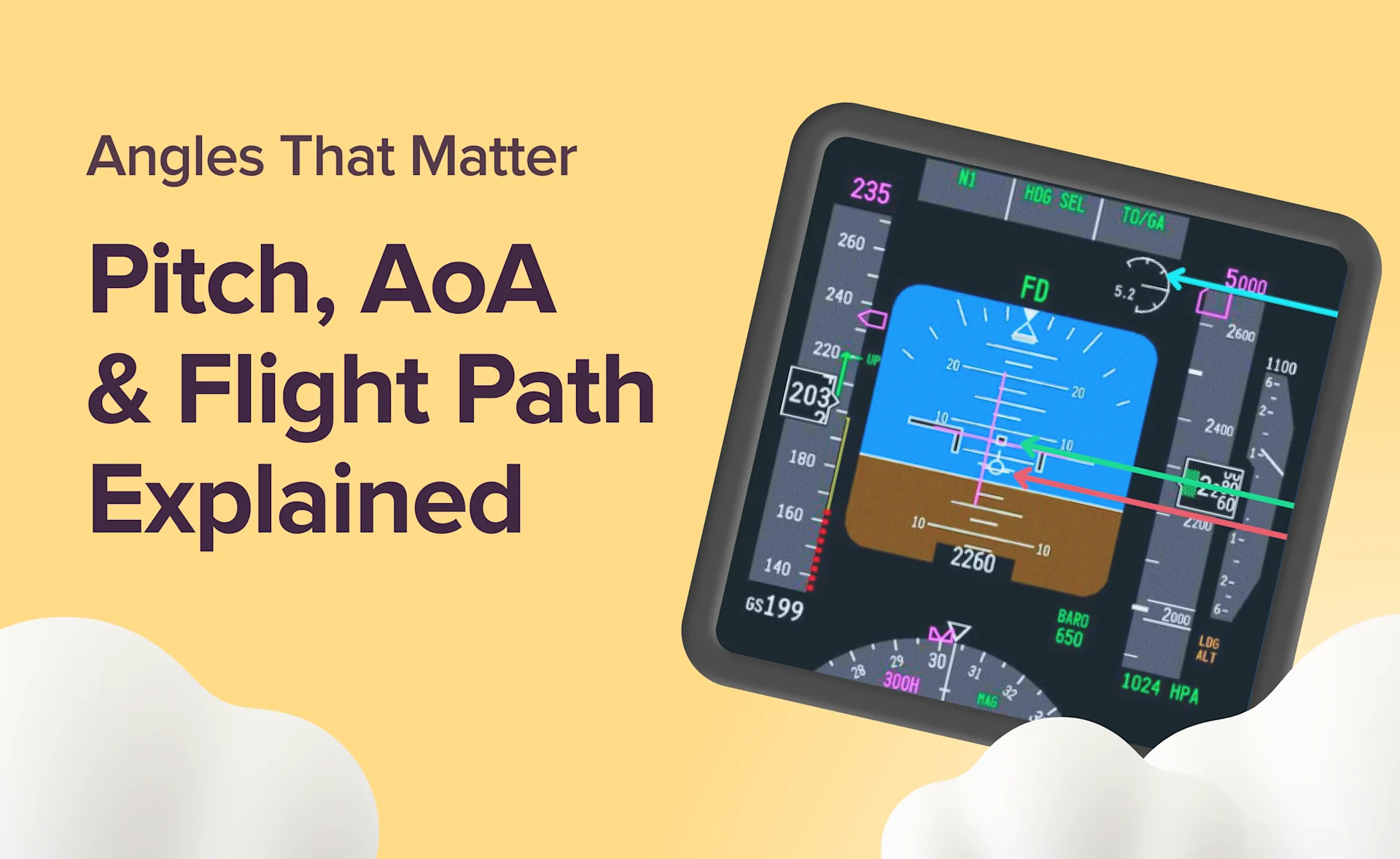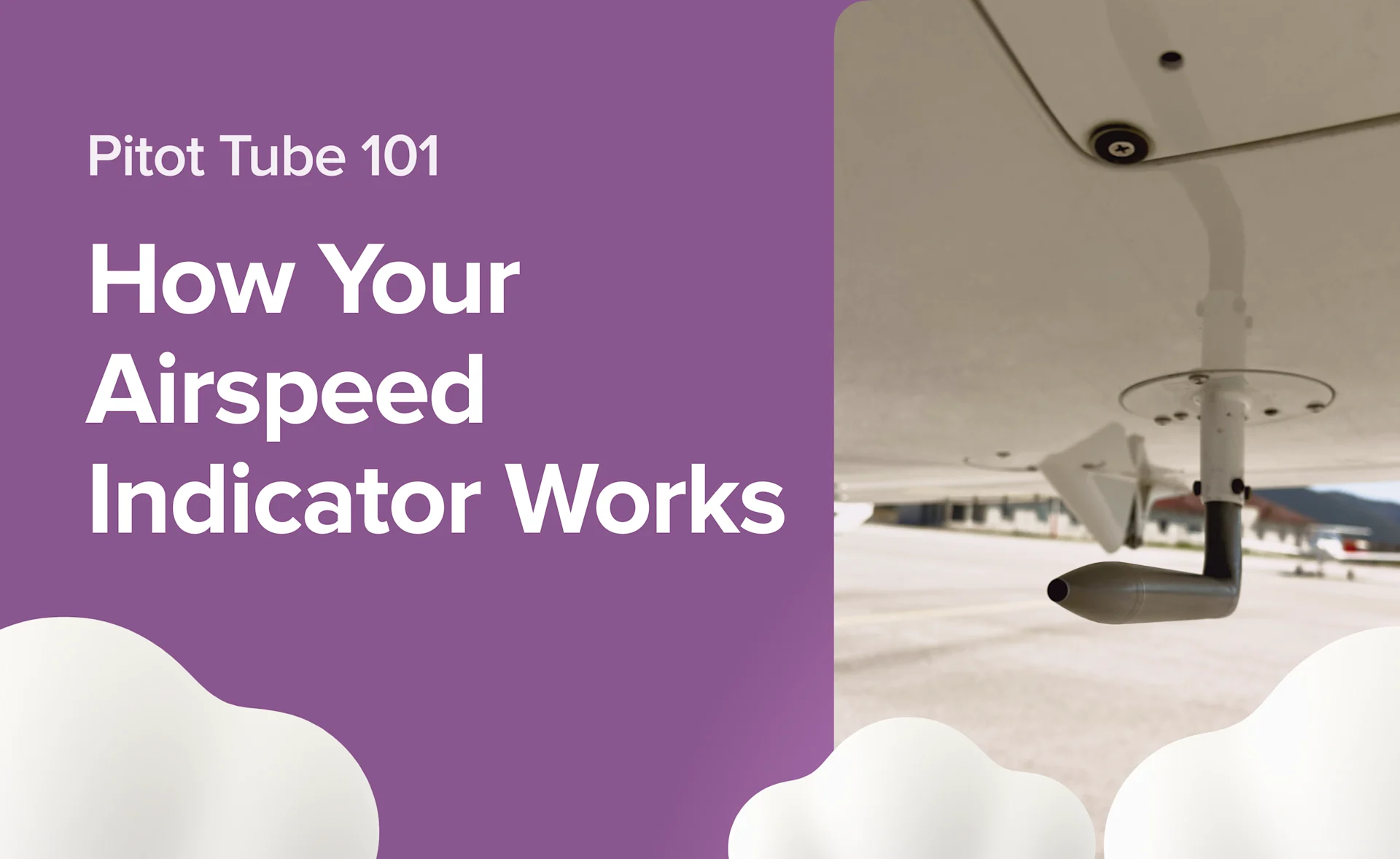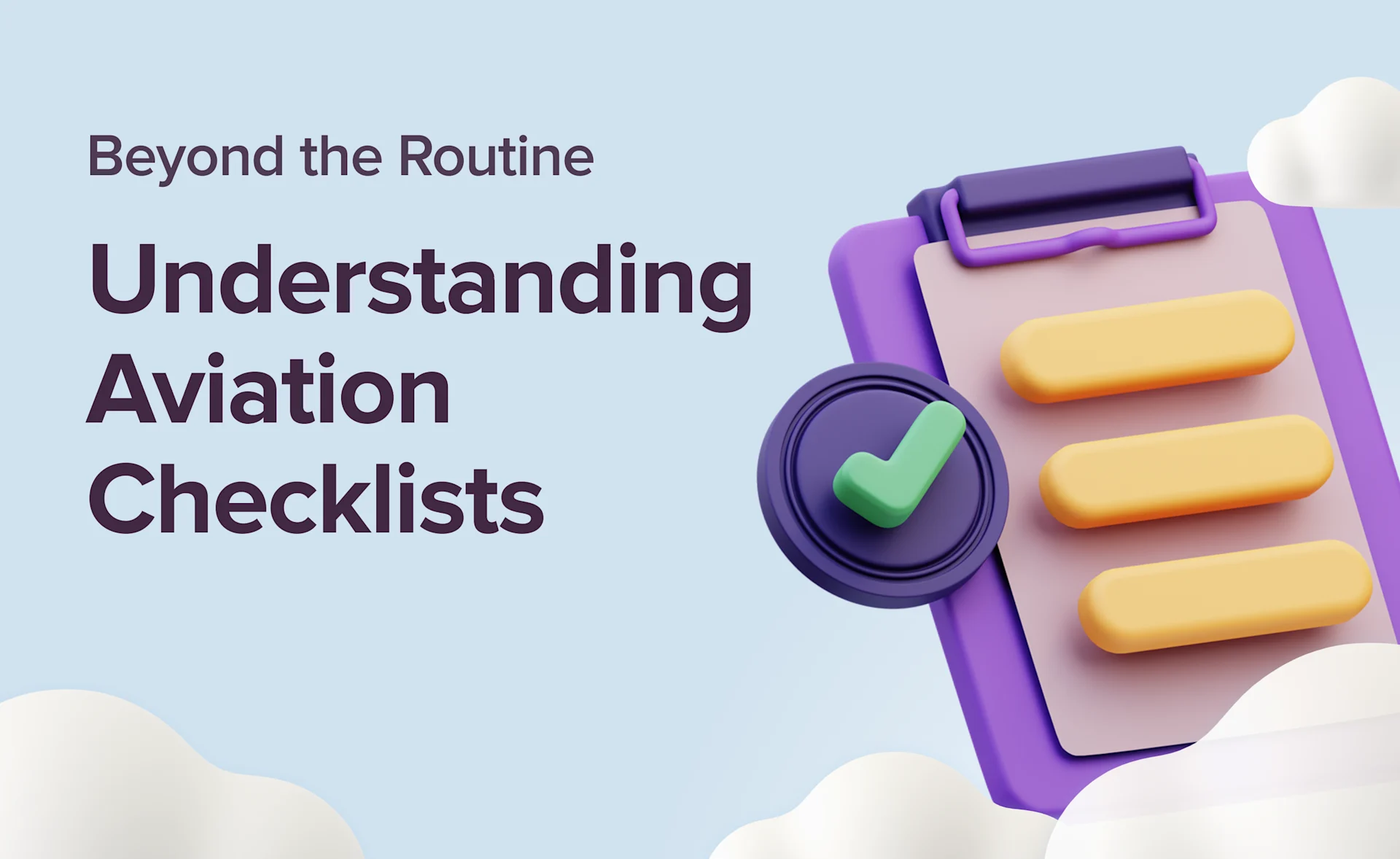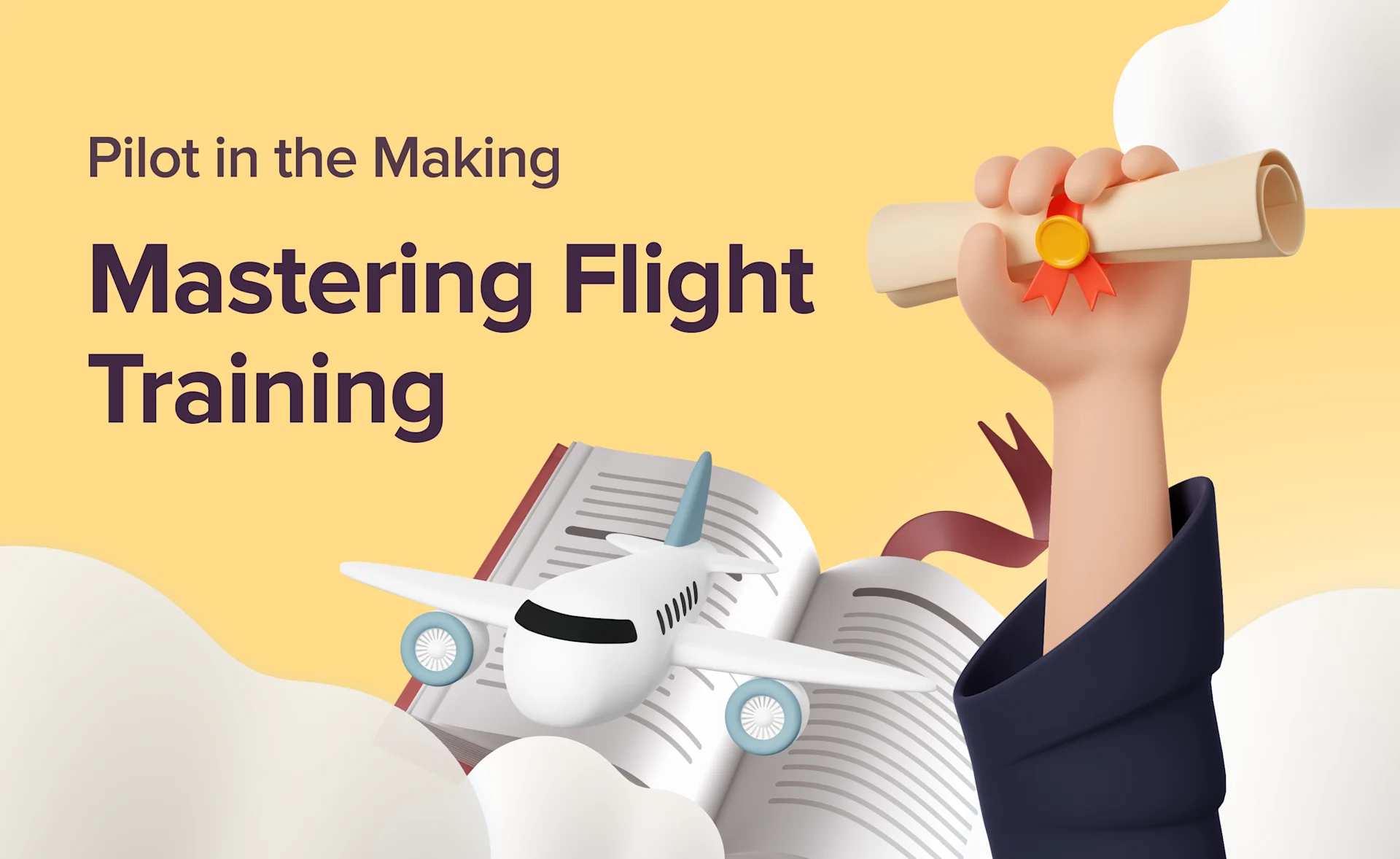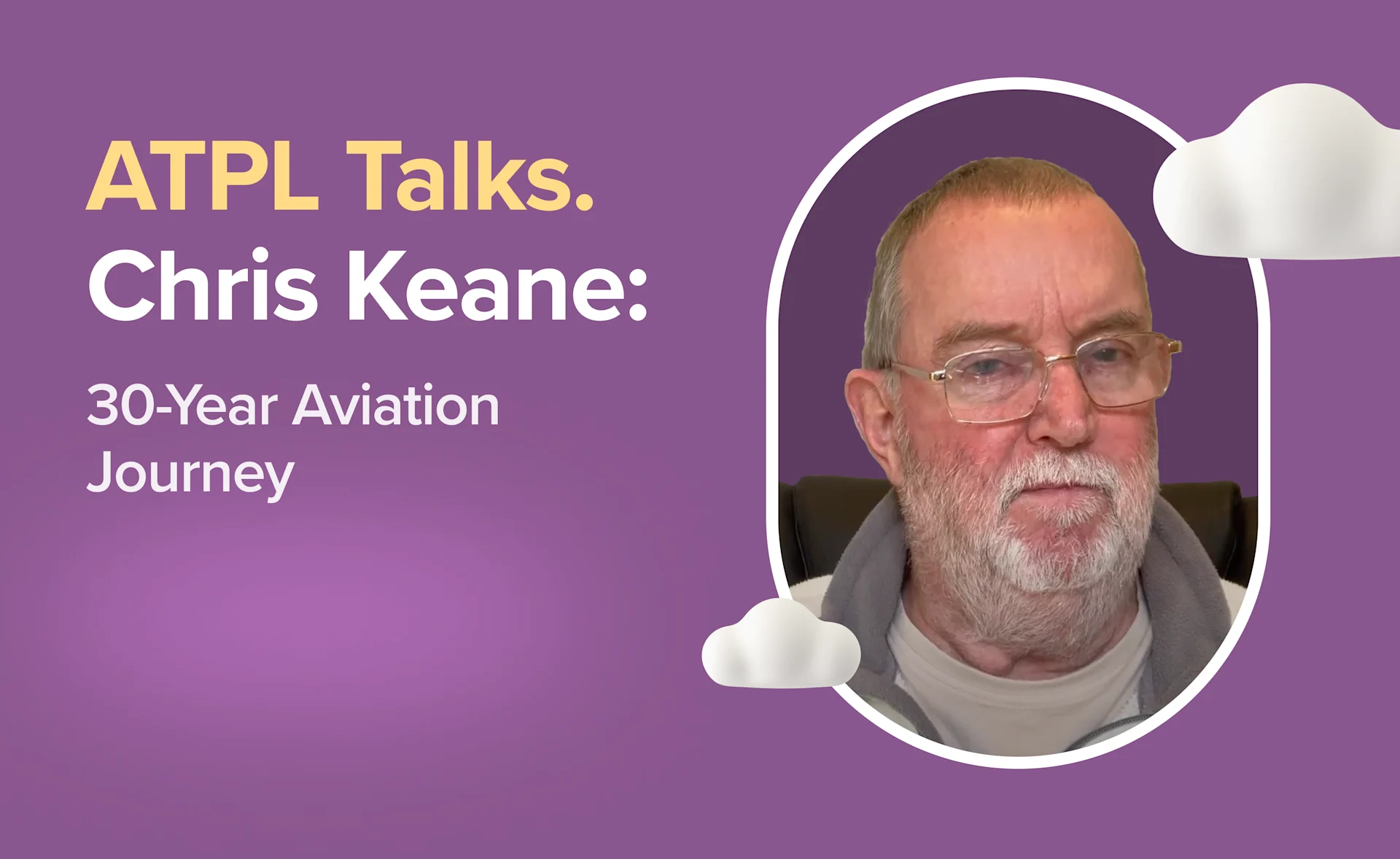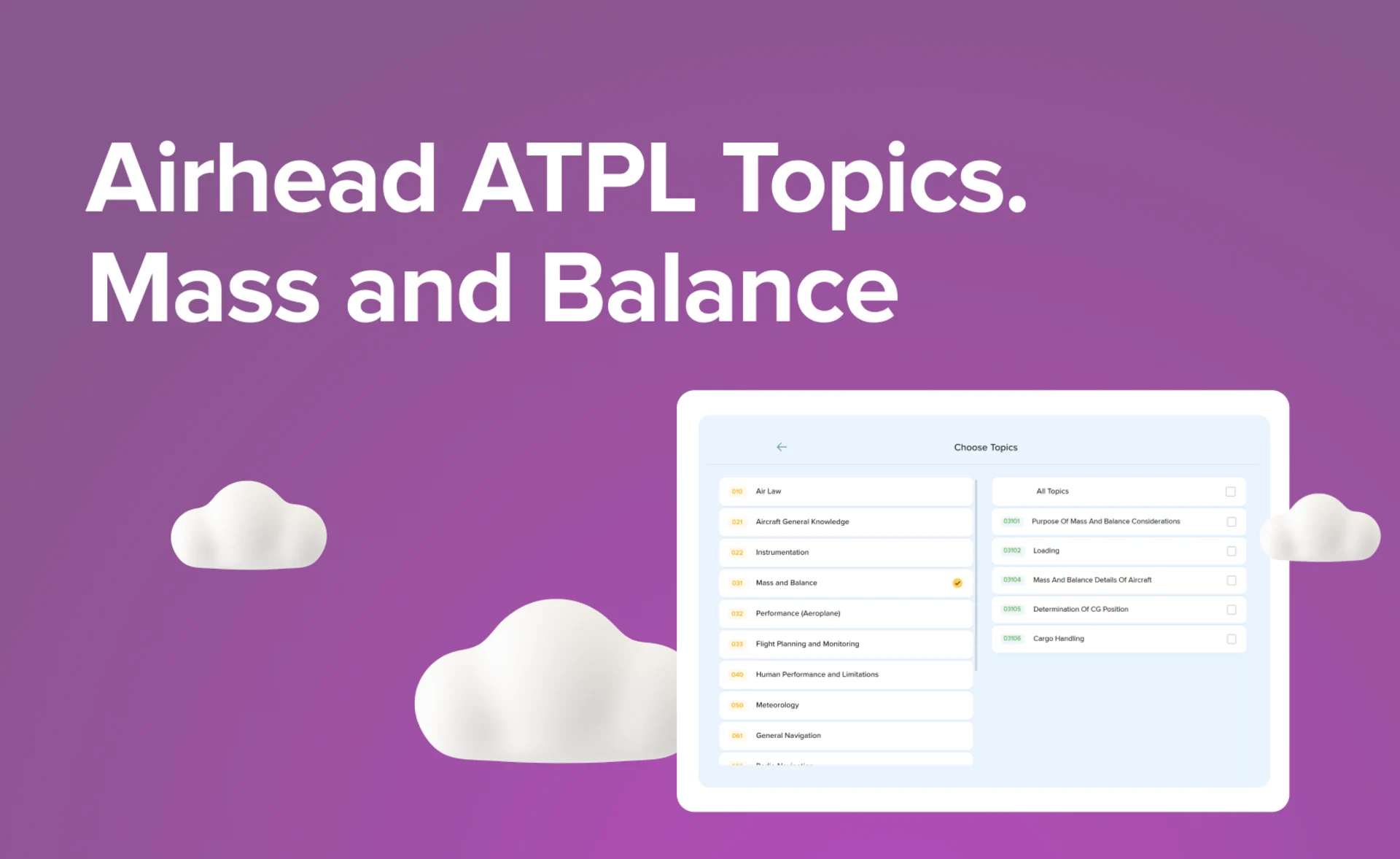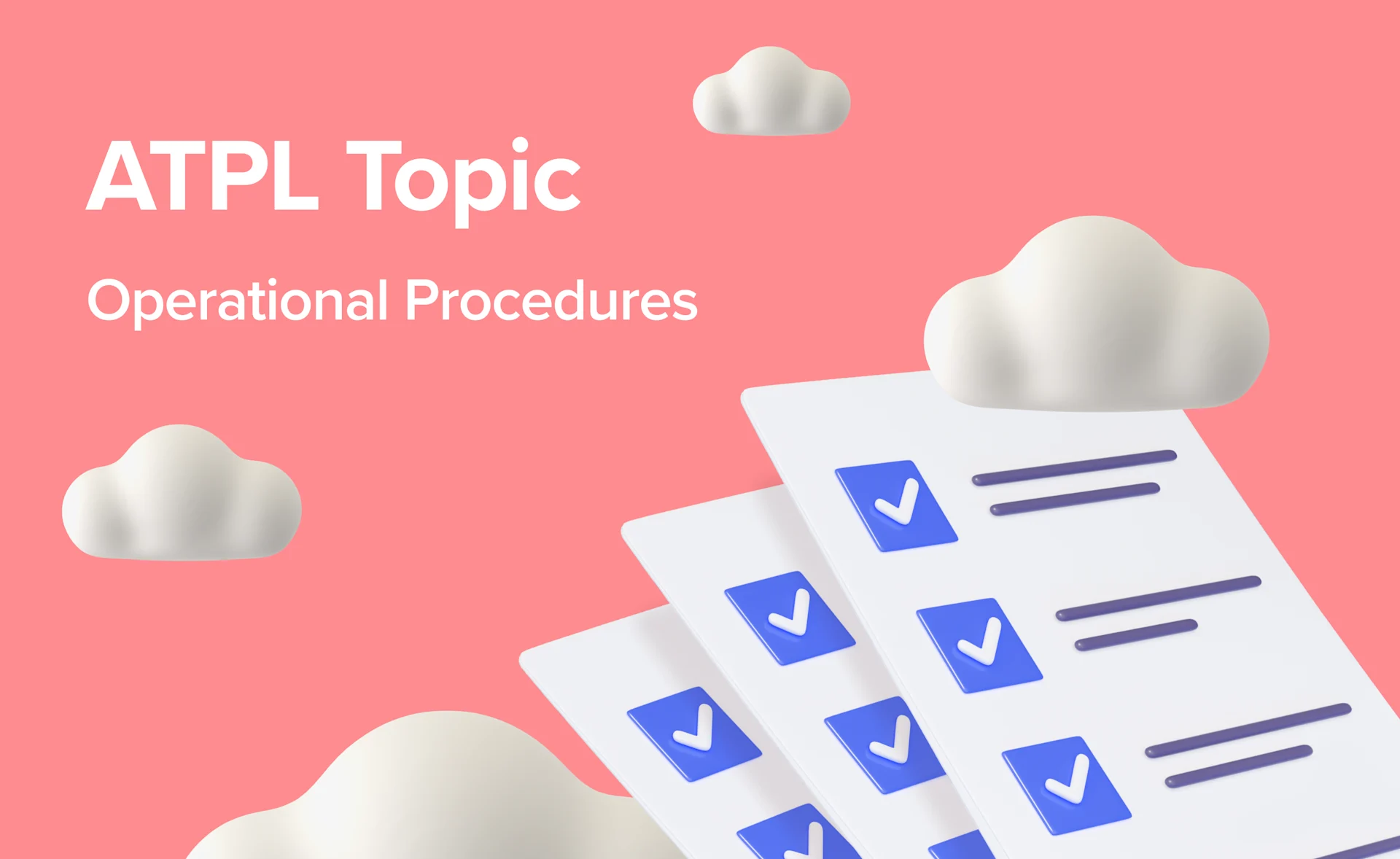ATPL Topic. Communications

Introduction to Communication
In the high-stakes world of aviation, clear and concise communication is the fundamental principle of safety. A single misunderstanding between a pilot and air traffic control (ATC) or another aircraft can have disastrous consequences. This is precisely why the EASA ATPL syllabus places importance on mastering communication skills.
This article has a look into the key communication topics covered in the ATPL syllabus. We'll break down the essential concepts and equip you with sample exam questions to test your understanding. Let's go!
Exam Overview
Number of Questions: 34 Exam Duration: 1 hour Difficulty: Easy 98% of papers passed
With 34 questions and a 1-hour duration, former students categorise it as easy. However, don't underestimate it. Despite a high historical pass rate of around 98% of papers passed, maintaining consistent preparation is paramount for achieving peak performance. Stay diligent to ensure success.
9 Essentials of Communication
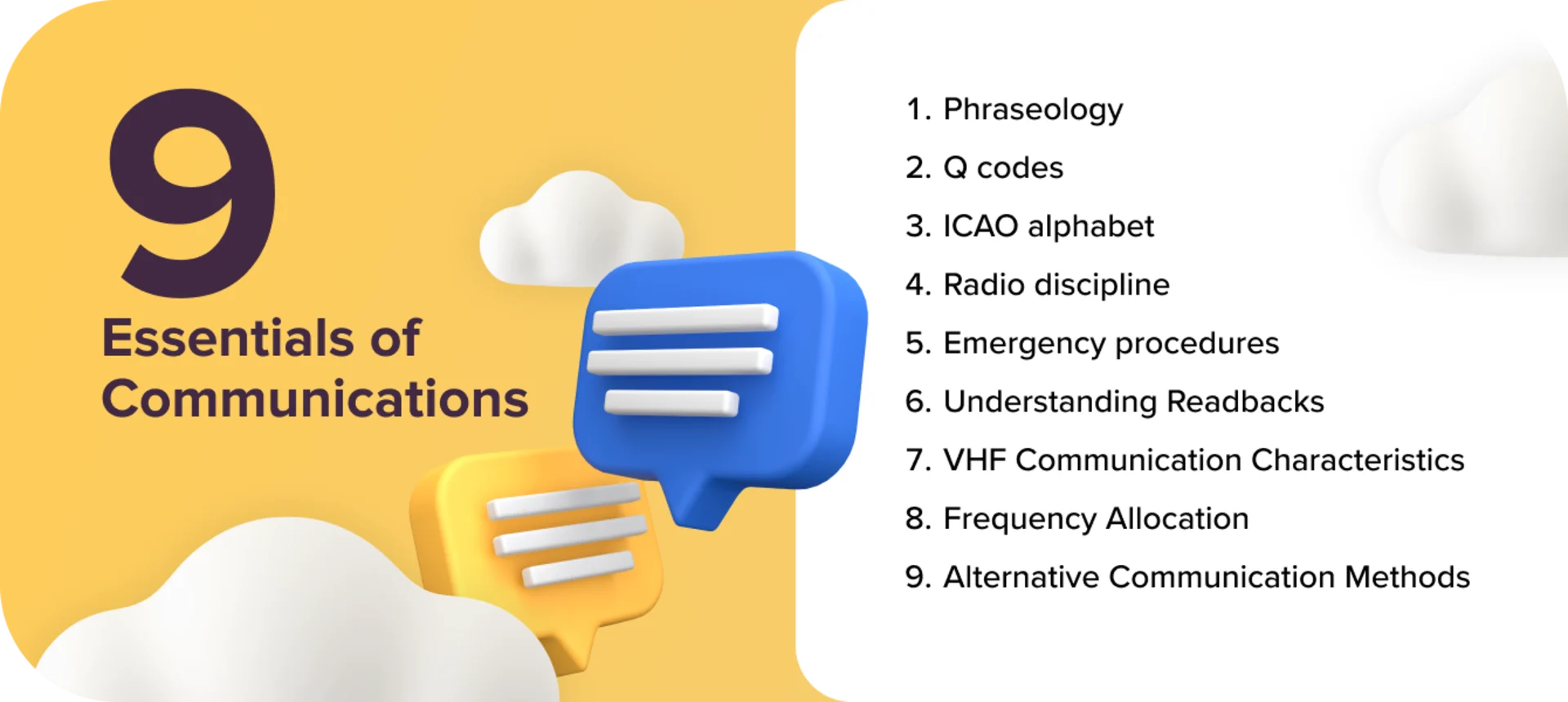
Before we jump into the specifics of the ATPL Communication syllabus, let's talk about the main terminology and key points you need to master. These foundational elements build confidence and effective mastery of new knowledge.
Here's what you'll need to start with:
1. Phraseology. Think of this as the secret handshake of pilots. Mastering the correct use of standardised radiotelephony language ensures everyone understands each other crystal clearly. Imagine the difference between a mumbled “something about take-off” and a clear “London Heathrow, G-FTRO is ready for departure runway 27R.” Using the right terms, from requesting clearances to reporting weather, is crucial for smooth and safe operations.
2. Q codes. Time is of the essence in the cockpit. Q codes, although a relic from Morse code between ATC and aircraft, still function as a useful abbreviated communication tool. Understanding their meaning and usage allows you to communicate vital information concisely. For example: QNH refers to the atmospheric pressure at runway elevation, a critical factor for accurate altimeter readings.
QTA signifies the time and place of the next expected weather change. QDR is the magnetic bearing from a specific point to the aircraft's position, helpful for search and rescue operations or directing aircraft to a specific location
Important Note: While Q-codes were once widely used in aviation communication, their usage has declined in recent years due to the prevalence of clear and concise phraseology. However, understanding some of the most common Q-codes can still be helpful for pilots.
3. ICAO alphabet. Ever struggled to understand a location or name due to similar-sounding pronunciations? The ICAO phonetic alphabet (From Alpha to Zulu) eliminates confusion. Practising clear and unambiguous pronunciation using these standardised terms ensures your messages are received loud and clear, even in busy airspace. Discover more about pilot's speak from our article.
4. Radio discipline. This discipline is your guide to communication etiquette. This includes maintaining a concise and professional tone, avoiding unnecessary transmissions, and acknowledging instructions from ATC promptly.
5. Emergency procedures. While we always prioritise safety, knowing how to react in an emergency is paramount. Being well-versed in protocols for distress and urgency calls equips you to handle critical situations effectively. Understanding the difference between a "Mayday" (immediate danger) and a “Pan-Pan” (urgent situation) ensures you transmit the correct distress signal and receive the necessary assistance promptly.
6. Understanding Readbacks. Effective communication is a two-way street. Mastering readbacks involves repeating instructions back to ATC to confirm understanding and avoid misunderstandings.
7. VHF Communication Characteristics. Imagine a crowded highway – that's what a busy airspace can be like for radio communication. Understanding Very High Frequency (VHF) propagation characteristics allows you to use the right “lane” or frequency for optimal communication. VHF signals travel in a straight line, so knowing about terrain and obstacles that can block them is essential.
8. Frequency Allocation. This is all about using the designated channels for specific purposes. For example, some frequencies are used exclusively for communication with ATC, while others are used for pilot-to-pilot coordination.
9. Alternative Communication Methods. The world of aviation communication is constantly evolving. Being familiar with alternative communication methods like data link and satellite communication broadens your skill set. Data link allows for text-based messages with ATC, reducing congestion on voice frequencies. Satellite communication provides a reliable connection over vast distances, especially for oceanic flights.
By mastering these essentials, you'll be well on your way to becoming a confident and competent communicator in the skies. Remember, clear communication is not just about passing the ATPL exam – it's about fostering safety and efficiency for yourself, your passengers, and everyone sharing the airspace.
Subject Syllabus
Communication is the lifeblood of aviation safety, and the EASA ATPL syllabus recognises its importance. So let's equip you with a comprehensive overview of this subject, breaking down key sub-areas and concepts to focus on.
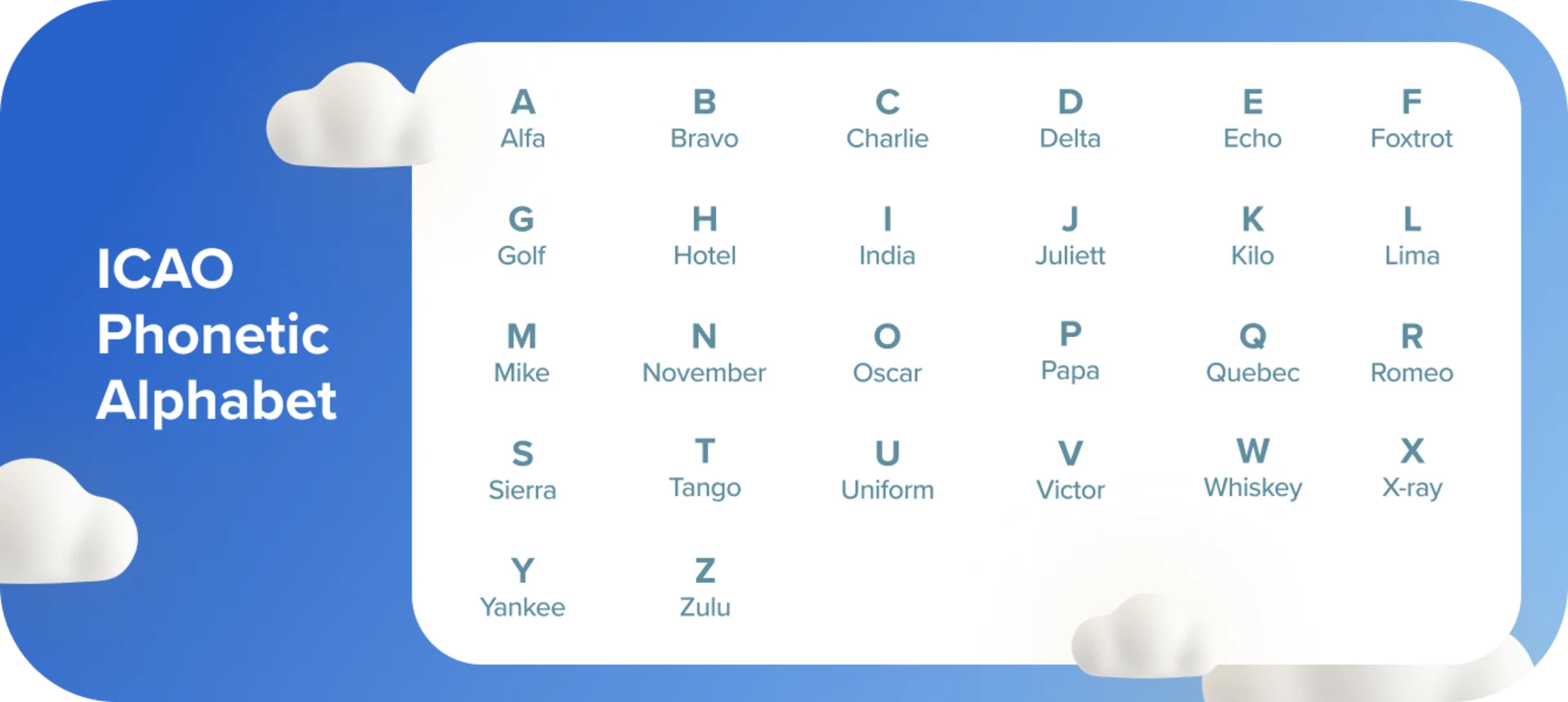
090 01 Concepts
We have already mentioned the main concepts under the Communication ATPL topic.
But communication goes beyond words. Your voice is your key tool. Mastering clear, concise, and standardised communication techniques ensures everyone understands your message. Practising proper pronunciation using the ICAO phonetic alphabet (Alpha, Bravo, Charlie...) eliminates confusion. From this section, you'll also learn about principles of effective communication in aviation, including clarity, brevity, and accuracy.
You will understand the limitations of radio waves, and factors influencing successful exchange of information in the aviation environment, such as language barriers, cockpit resource management, and workload management.
090 02 General Operating Procedures
Following established procedures for ATC interactions is key. This section provides a comprehensive understanding of aviation communication principles, protocols, and practices.
This subtopic also involves understanding different communication systems like VHF radios, HF long-range radios, and even data links for text-based messages. You'll learn how to request clearances for take-off, landing, and everything in between.
090 03 Relevant Weather Information

Not all conversations are about clearances. Beyond instructions, pilots rely heavily on exchanging weather information. Think of it like a real-time briefing as you navigate the ever-changing atmosphere. Mastering how to transmit and interpret these reports equips you for safe and efficient flight planning and decision-making.
Here's a more comprehensive insight into what it means to be “weather-wise”.
Understanding METARs and TAFs
These coded weather reports are your go-to sources for current and forecast weather conditions. Learning to decode the abbreviations and symbols within a METAR (Meteorological Terminal Aviation Routine Weather Report) or TAF (Terminal Aerodrome Forecast) tells you everything from visibility and cloud cover to wind speed and direction, precipitation type, and runway conditions.
Interpreting PIREPs
Pilot Reports (PIREPs) are real-time weather observations submitted by other aircraft in flight. These reports provide valuable insights into current conditions along your route, like encountering turbulence or icing, that may not be captured in official forecasts.
Communicating Weather Observations
As a pilot, you'll also be responsible for transmitting weather observations, especially if you encounter unexpected conditions. Knowing the correct phraseology and reporting format ensures your information is clear and actionable for other pilots and ATC.
Understanding Weather Phenomena
Being familiar with common weather phenomena like wind shear, thunderstorms, and microbursts is crucial. Understanding their formation, impact on aircraft, and the associated phraseology allows you to anticipate and react appropriately during flight for a safe outcome.
Example: Wind Shear in Action
Imagine you hear a report of "wind shear on short finals for runway 27R" during your landing approach. This means a sudden and significant change in wind speed or direction can occur close to the ground. Knowing this information allows the pilot to:
Adjust a plane's approach profile to maintain safe airspeed and avoid a stall.
Communicate intentions to ATC and potentially request a go-around manoeuvre.
Be prepared to react quickly if the wind shear affects your aircraft's handling.
By mastering these skills in interpreting and communicating weather information, you'll be well on your way to becoming a pilot who can make informed decisions, navigate changing weather conditions, and prioritise safety throughout your flight.
Don't get caught in a storm! Dive deep into the ATPL Meteorology topic. Click here.
090 04 Voice Communication Failure
Even the best plans can hit turbulence. What if your radio malfunctions? Exploring procedures for handling voice communication failures equips you to stay calm and use alternative communication methods. This could involve using emergency frequencies or even resorting to visual signals with ATC.
Here is a real-life example. In 2009, US Airways Flight 1549 successfully landed in the Hudson River after a bird strike disabled both engines. The pilot's clear communication with ATC, even during a critical situation, was instrumental in the safe evacuation of all passengers and crew.
090 05 Distress and Urgency Procedures

Sometimes, emergencies happen. Being prepared to react decisively is vital. Learning how to transmit distress and urgency messages ensures you get the help you need fast.
Here are 4 principles you'll need to know
Knowing When to Call for Help
At the heart of these procedures lies the ability to distinguish between a Mayday and a Pan-Pan call. A Mayday signifies an imminent and grave danger to the aircraft or its occupants. Think of it as a situation requiring immediate assistance, such as a complete engine failure or a fire onboard. Here, every second counts.
In contrast, a Pan-Pan call indicates an urgent situation but does not pose immediate danger. This could be a partial system failure, a medical emergency on board, or a security threat. While assistance is needed, the situation isn't life-threatening at that moment.
Making the Call
Knowing the proper format for transmitting a Mayday or Pan-Pan call is crucial. This involves:
Clearly stating the nature of the emergency or urgency. For a Mayday, this might be "Mayday, Mayday, Mayday, this is [Your Callsign]..." followed by a concise description of the emergency.
Providing your aircraft identification (call sign). This helps ATC locate you quickly and efficiently.
Reporting your position or last known position. The more precise the location, the faster help can arrive.
Stating your intentions, if possible. If you have a plan, like attempting an emergency landing, informing ATC can help coordinate a response.
Maintaining Communication Clarity
During these critical situations, clear and concise communication is paramount. Focus on plain language, avoiding technical jargon that might not be understood by all parties involved. Set a priority for vital information like the nature of the emergency, your location, and any immediate needs.
Taking Control and Staying Calm
Following ATC instructions to the best of your ability is crucial unless the situation dictates otherwise. Their expertise in handling emergencies can be invaluable. However, remaining calm and professional under pressure is equally important. Clear and accurate communication can significantly improve the outcome in such situations.
090 06 VHF Propagation and Allocation of Frequencies

Pretend you're on a crowded highway – that's what a busy airspace can be like for radio communication. Understanding VHF (Very High Frequency) propagation characteristics helps you use the right lane, or frequency, for optimal communication. VHF signals travel in a straight line, so knowing about terrain and obstacles that can block them is critical. Also, knowing the frequency allocation makes sure you're using the channels for specific things, like talking to ATC or coordinating with other aircraft.
Additionally, as a student, you will learn about the international regulations and standards governing the allocation of frequencies for different aviation services, such as air traffic control, aircraft-to-aircraft communication, and navigation aids.
090 07 Other Communications

The world of aviation communication is no longer confined to voice transmissions. As technology advances, pilots have access to a wider range of communication methods, each with its advantages. Getting to know these alternatives will broaden your skills and equip you to handle diverse situations effectively.
Data Link. Imagine exchanging clear and concise text messages with Air Traffic Control (ATC) – that's the power of data link. This technology reduces congestion on busy voice frequencies, allowing for faster and more efficient communication, especially in high-traffic areas. Think of it as a streamlined way to transmit routine clearances, weather updates, or position reports, keeping voice channels free for critical exchanges.
Satellite Communication. For pilots venturing over vast distances, particularly on oceanic flights, reliable communication is essential. Satellite communication provides a dependable connection, even in remote locations where traditional VHF radio signals might be limited. This ensures you can stay connected with ATC, receive critical weather updates, and maintain a vital lifeline in case of emergencies.
Examples of Communication Exam Questions


